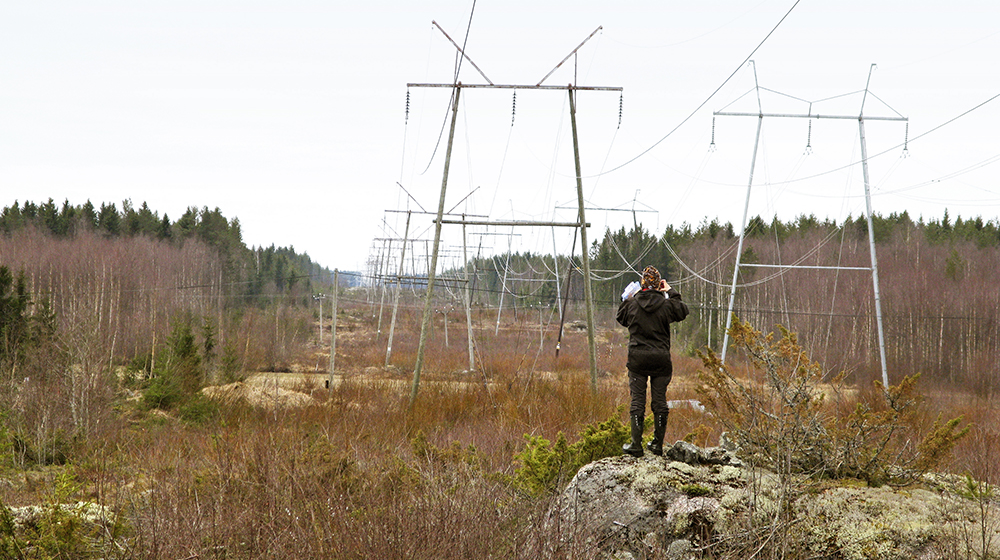The early spring sun already feels warm and Great Tits are chirping in Hämeenpuisto, Tampere. Today, biologist Marja Nuottajärvi intends to check whether Flying Squirrels are still present in the same area as a year ago.
“In 2012, a waste-to-energy plant was planned on the border between Kangasala and Tampere; due to its electricity transmission needs, a new transmission line was needed alongside the existing transmission lines. However, the transmission line area was becoming so wide that the Flying Squirrels in the area might not be able to cross the open space. As a solution, crossing poles for Flying Squirrels were erected under the transmission lines,” Nuottajärvi tells us.
At the edge of the transmission line area, Nuottajärvi checks the areas around probable resting trees, but this time, no droppings can be found. She will return once the spring has progressed a little. Nuottajärvi has been annually monitoring how Flying Squirrels move around in the vicinity of crossing poles.
“According to observations in 2015–16, Flying Squirrels have been using the poles, meaning that they still live in the area. Based on the experiences, similar crossing poles can be used elsewhere, as well.”

Pack a lunch and go for a hike
Nuottajärvi, who works as a project manager at the Tampere office of FCG Suunnittelu ja Tekniikka Oy, conducts nature and environmental surveys. EIA procedures and nature inventories are an integral part of the planning of various construction and, for example, transmission line projects. The inventories survey biodiversity and the animal and plant species in the area. Many valuable aquatic natural sites, such as springs, are also reported. If necessary, inventories are conducted in cooperation with a landscape architect or archaeologist. The summer season from March to October is mainly spent doing fieldwork all around Finland. While on a trip, Nuottajärvi works long days and sometimes even weekends. The type of terrain has an impact on whether the survey of the area under investigation proceeds quickly or slowly.
“For example, moving around a swamp can be difficult, when occasionally you sink up to your waist. Weather conditions can also slow things down. When you’re already there, the work will be done even in pouring rain and strong wind, although such conditions pose a challenge for the investigation. However, things like birds and bats can’t be observed in extremely bad weather, so such work must be postponed until the conditions improve.”
Insects are something a nature surveyor just has to live with. Gnats are a minor inconvenience compared to ticks and persistent deer flies. In the swamps of Lapland, hundreds of black flies get in your face, literally.
Nuottajärvi is also an outdoor person on her free time. Her various hobbies include rock climbing and spearfishing.
“Sometimes I get to make a nature survey on water. I paddle along the shore and go ashore when necessary.”
Bubbling frogs
The presence of Flying Squirrels is verified based on nesting cavities and droppings, the size of a grain of rice, at the bases of trees. In early spring, the droppings are easy to see on top of the snow, and the squirrels are also more mobile in spring, looking for other squirrels with amorous intentions.
“Even though I have surveyed their whereabouts for about fifteen years, I still have never seen a single one,” shrugs Nuottajärvi.
“For that to happen, you’d need to be silent and still for a long time. Birdwatchers do sometimes see them at dawn.”
In addition to Flying Squirrels, another protected species, the Moor Frog, is surveyed in spring. Moor Frogs are distinguished from other frogs by their typical, bubbling courtship call. They actively bubble to each other during the few weeks’ breeding season, and that is when Nuottajärvi is there. “I’ve played the bubbling to them from my phone, and the frogs answer. Then they’re easier to observe.”







